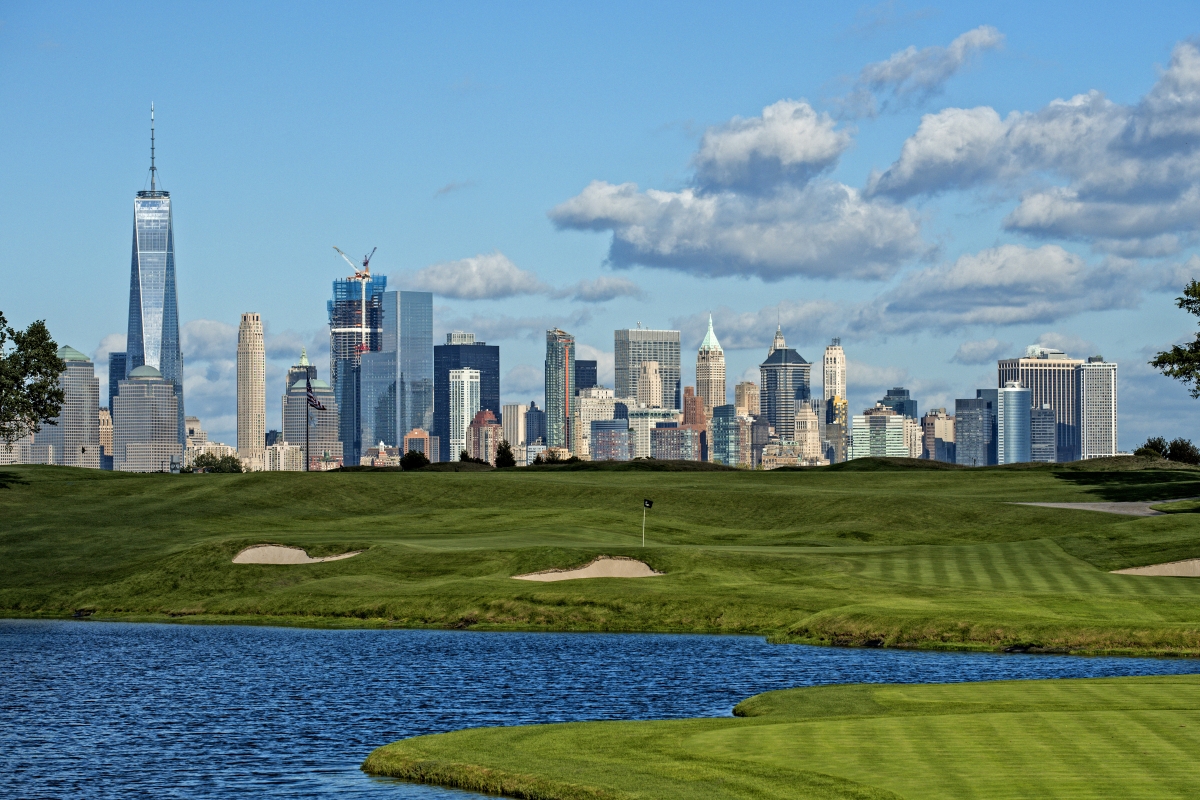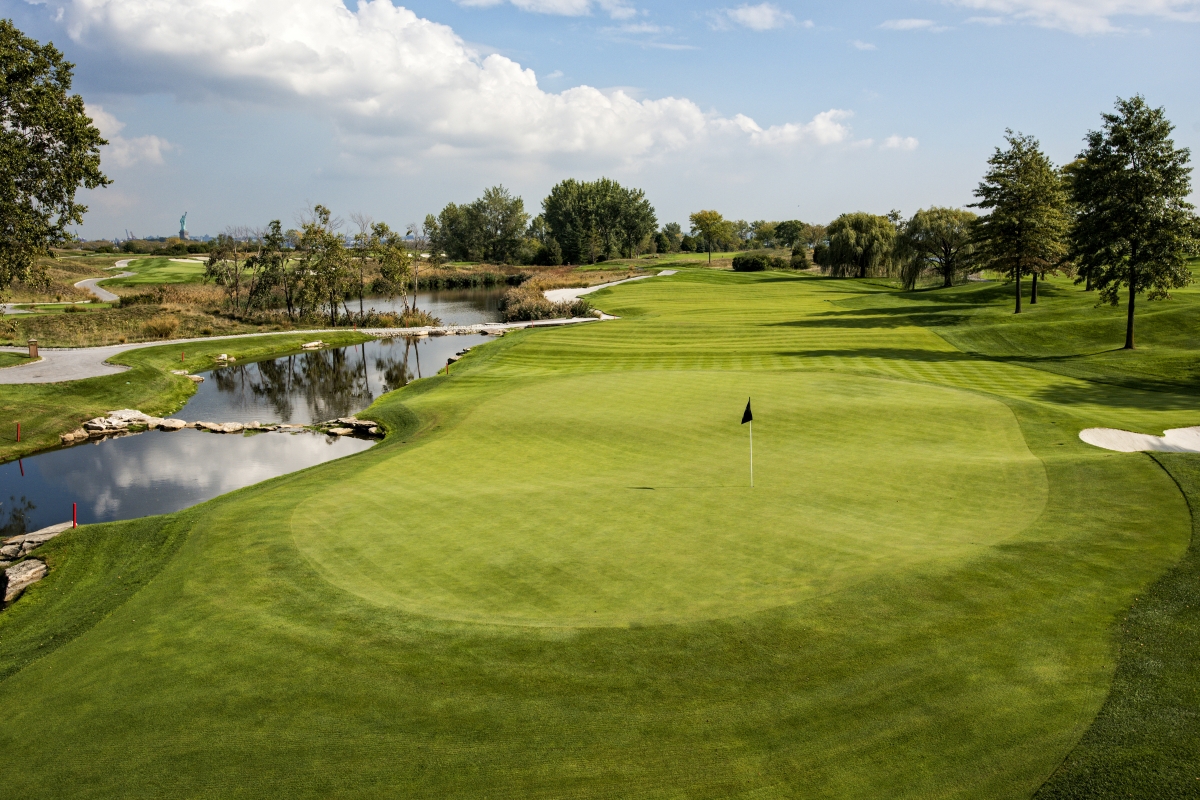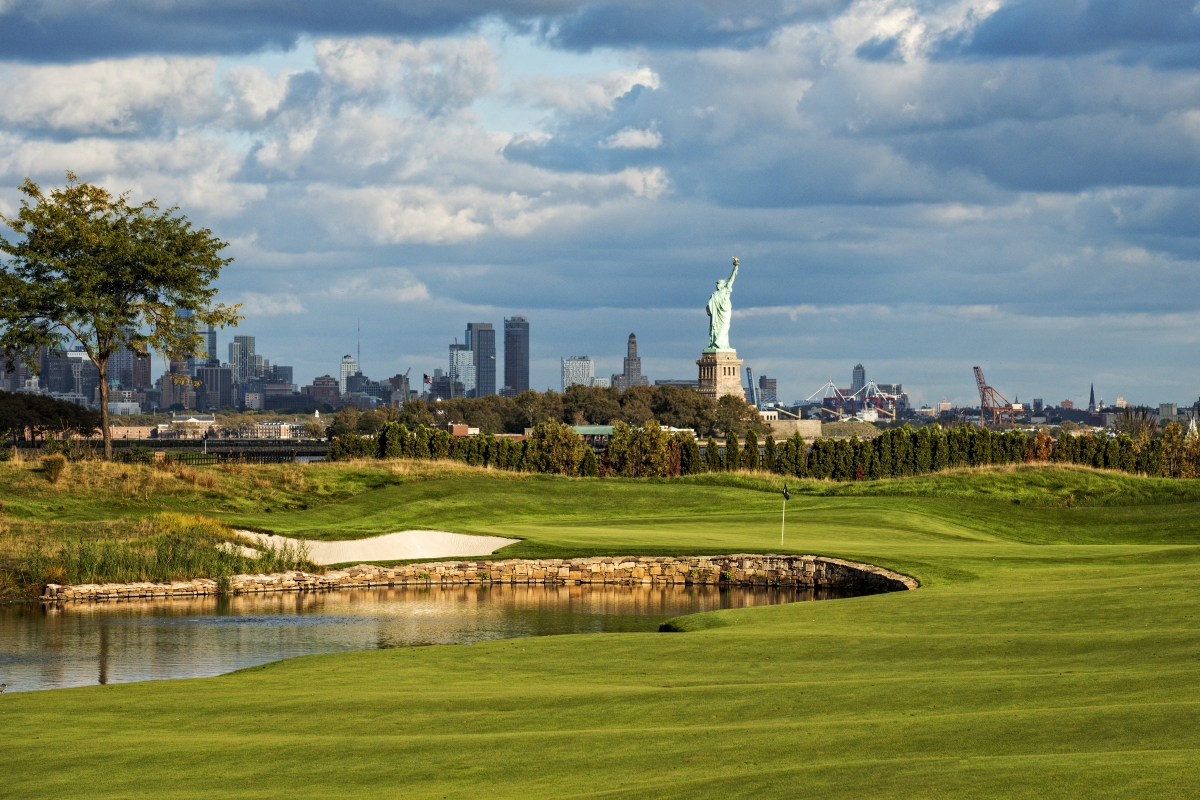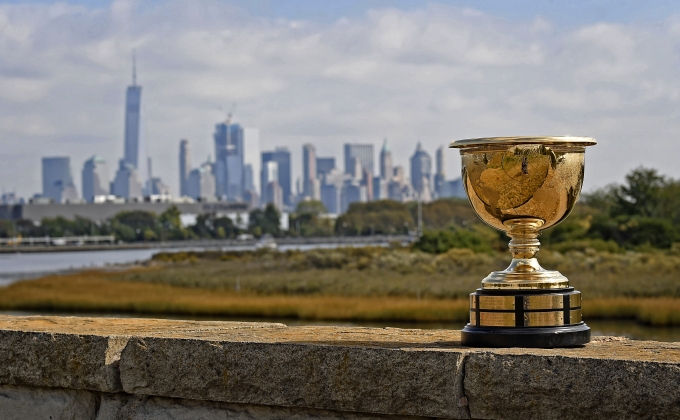Road to the Majors: Presidents Cup
The eyes of the world will be on the Met Area when the Presidents Cup comes to Liberty National in September.
Part of The Road to the Majors Presented by Rolex Series
Excerpted from the August/September 2017 Met Golfer
BY DAVID BARRETT
With its namesake Statue as a backdrop, Liberty National Golf Club will provide a per-fect setting for the Presidents Cup when the United States team hosts the International team in the twelfth playing of this biennial event in late September. And there’s more to it than the scenery: the design of the Jersey City course helps to make it a dramatic stage for the match play format of the event.
“If you have control of your golf ball here, you will definitely have chances for birdies,” says Liberty National head profes-sional Dan Schleichert. “But if you are off or don’t hit it in the right spot, your mistakes are definitely exploited and you can make bogeys quickly.”
That type of volatility should make for exciting matches, especially with the birdie and eagle possibilities afforded by some reachable par-5s and at least one—maybe two—drivable par-4s. PGA Tour rules official John Mutch looks forward to setting up the course, noting that many holes afford several options.
“There are three holes on each side where we can use mul-tiple tee locations. The course is going to really shine in this kind of format,” says Mutch.

Liberty National has hosted the PGA Tour before, in 2009 and 2013, for the tournament now known as the Northern Trust (formerly The Barclays) that kicks off the FedExCup playoffs. The course held up well in those events, with winning scores of 9- and 11-under, but resistance to scoring is less of a concern in match play.
“You like to have birdies win holes, you set it up so players can be aggressive. You can play the holes shorter,” says Mutch, while noting that on the other hand, hole locations can be tightened up more than in stroke play to create more risk.
The course setup won’t be the only change from past tournaments at Liberty National. The hole numbering will be different, with play starting on what is normally the fifth hole and finishing on the usual fourth hole. The holes that make up the strong finishing stretch of 14 through 18 on the regular course will become 10 through 14 for the Presidents Cup.
“A lot of matches don’t go the full 18 holes. We wanted to make sure that those holes [the usual 14 through 18] all were played,” says Mutch.
The start and finish in the Presidents Cup won’t be too far from the clubhouse, even with this change. The first tee will be on what is usually the far side of the driving range, with a new teeing area placed on that side so that players will warm up near their first tee and hit toward the Manhattan skyline. Cabins for the U.S. and International teams and a new putting green have also been built in that area.
The change creates a finishing stretch with two par 3s in the last three holes, including No. 18. “Those last four holes are close to each other,” says Schleichert. “You can almost see all the greens from one spot. It should be exciting.”
Liberty National opened its Tom Kite-Bob Cupp design in 2006, with the PGA Tour’s design staff making some tweaks in 2010 after reaction to the first FedExCup event. One change was to get rid of most of the primary rough. Now it’s all inter-mediate rough from the fairway to the fescue that lines nearly all of the holes; the long brown stuff is sometimes close enough to be very much in play, though occasionally far enough away to endanger only the wildest shots. The players liked the new setup when they played it in 2013, as it allowed them to be more aggressive—which will again be a benefit to the match play format.
“You start out right away with probably the toughest driving hole on the course,” says United States captain Steve Stricker. The first plays down-hill to a fairway sloping from right to left, with water on the left all the way to the green. The second hole, a 538-yard par five reachable in two for everyone, tilts in the opposite direction to water to the right on both the tee shot and the second. The green is partially tucked behind the water, making for a risk-filled approach where a bold shot could yield an eagle chance but an imprecise one can get wet. The fourth hole is another par five, this one at 611 yards, where the edge could go to long hitters who can get there with two blasts.
The fifth hole (previously the ninth) is one where the setup will be different for match play. It’s a 474-yard par four with a creek crossing the fairway, necessitating a layup off the tee for many players. In some of the sessions, the tee will be moved up to tempt players to try to drive over the creek and set up a short approach shot at the risk of not carrying the diagonal hazard. “We’re not able to do that for a stroke play format,” says Mutch.
The Presidents Cup configuration puts all three par fives on the front nine, concluding with the 563-yard ninth. It’s reachable in two, but this time with water to the left creating the risk on the second shot.

The 10th hole starts what is usually the finish-ing stretch, affording a beautiful view of the Manhattan skyline and also a chance at birdie on the 150-yard par three, though a back right hole location demands a precise shot. After the long par-four 11th comes the drivable par-4 12th, which will be set up at anywhere from 280 to 320 yards. Water adds an element of danger to the right, but nearly everyone will try to drive the green. The fescue is a prominent feature on both sides of the 13th, while 14 is a traditionally strong par four for what is normally the finishing hole.
Making the “turn” at the clubhouse to the 15th hole, players will find that the course’s usually gentle starting hole may have a twist in match play. Typically a layup off the tee and a short-iron approach to the 398-yard hole, it’s not out of the question that a player might try to cut the corner with a driver and get near the green, especially in four-ball matches.
After a strong par-three 16th of 220 yards comes a hole that can be set up as a second drivable par four, an intriguing prospect so close to the finish. While the championship tee at the 17th is at 395 yards, look for the hole to be played more than once at 320, a tempting prospect even to a small green with drop-offs on both sides. The par-three 18th plays toward One World Trade Center and can either be a birdie chance or a tough test depending on tee placement (163 or 193 yards) and hole location on a shallow green.
“There’s a good mix of holes and a lot of risk/reward holes,” says International captain Nick Price, who will be trying to end a string of six straight losses for the team representing the rest of the world except for Europe. “It will be a won-derful venue.”
Price’s team might be an even heavier underdog than usual this time, with stalwarts like Jason Day and Adam Scott not showing their best form in 2017. Scott, at least, can draw from his victory at Liberty National in the FedExCup playoffs four years ago.
Stricker can tell his team a thing or two about how to play the course, having finished second when the playoffs came to the course in 2009. He has a good shot at finishing first this time—and Liberty National has a good shot at gaining pres-tige and respect as a big-event venue for an all-world show. ■

Excerpted from the August/September 2017 Met Golfer
